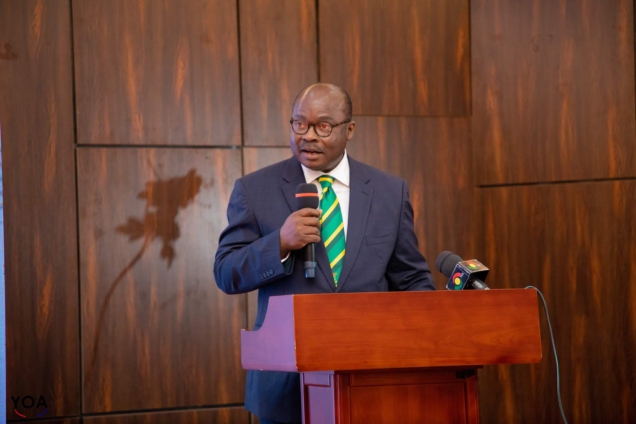The Financial Soundness Indicators (FSI) of banks were broadly positive as of the end of December 2023.
This follows improvements in liquidity, efficiency, and profitability during the review period.
Solvency and asset quality indicators, however, moderated during the review period.
According to the January 2024 Monetary Policy Report, the industry’s liquidity position remained strong following increases in core and broad liquidity measures during the review period.
The ratio of core liquid assets (mainly cash and due from banks) to total deposits also increased from 38.4% in 2022 to 39.3% in 2023.
Similarly, the ratio of core liquid assets to total assets increased from 29.0% to 30.7% over the same comparative period. The increases in the core liquidity measures, according to the Bank of Ghana, partly reflected the upward revision in the cash reserve ratio during the year.
Capital Adequacy Ration higher than minimum threshold
Also, the banking industry’s solvency position, measured by the Capital Adequacy Ratio (CAR) adjusted for regulatory reliefs, was 13.9% in December 2023, higher than the revised prudential minimum of 10%, but lower than the ratio of 16.2% recorded in December 2022.
As part of measures to minimise the impact of the DDEP, banks were also allowed to spread derecognition losses on the restructured bonds over a period of four years.
The decline in the CAR between December 2022 and December 2023, the Bank of Ghana said, reflects the recognition of a quarter of the impairments on the restructured bonds in 2023.
Asset quality risks elevated
Asset quality risks were elevated in December 2023, reflecting the lingering impact of the 2022 macroeconomic challenges on the banking sector.
Notwithstanding the moderation in growth in the stock of non-performing loans (NPL), the banking industry’s NPL ratio increased to 20.7% in December 2023, from 16.6% in December 2022.
Similarly, the NPL ratio adjusted for the fully provisioned loan loss category increased from 6.6% to 8.4% during the same comparative period.
The NPL stock increased by 37.4% to GH¢15.8 billion in December 2023, compared with a growth of 40.5% recorded in December 2022.
Growth in gross loans and advances, on the other hand, moderated to 13.8%, from 25.9% over the same comparative period.
Latest Stories
-
I want to focus more on my education – Chidimma Adetshina quits pageantry
2 hours -
Priest replaced after Sabrina Carpenter shoots music video in his church
2 hours -
Duct-taped banana artwork sells for $6.2m in NYC
2 hours -
Arrest warrants issued for Netanyahu, Gallant and Hamas commander over alleged war crimes
2 hours -
Actors Jonathan Majors and Meagan Good are engaged
2 hours -
Expired rice saga: A ‘best before date’ can be extended – Food and Agriculture Engineer
2 hours -
Why I rejected Range Rover gift from a man – Tiwa Savage
2 hours -
KNUST Engineering College honours Telecel Ghana CEO at Alumni Excellence Awards
3 hours -
Postecoglou backs Bentancur appeal after ‘mistake’
3 hours -
#Manifesto debate: NDC to enact and pass National Climate Law – Prof Klutse
3 hours -
‘Everything a manager could wish for’ – Guardiola signs new deal
3 hours -
TEWU suspends strike after NLC directive, urges swift resolution of grievances
4 hours -
Netflix debuts Grain Media’s explosive film
4 hours -
‘Expired’ rice scandal: FDA is complicit; top officials must be fired – Ablakwa
5 hours -
#TheManifestoDebate: We’ll provide potable water, expand water distribution network – NDC
5 hours

